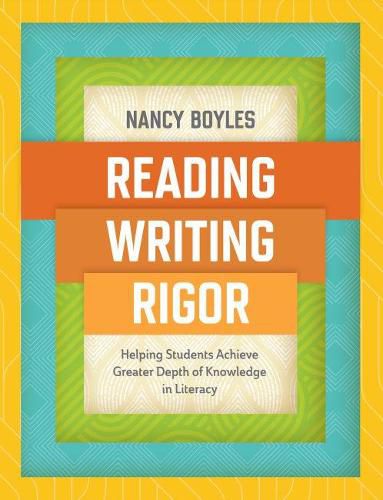Readings Newsletter
Become a Readings Member to make your shopping experience even easier.
Sign in or sign up for free!
You’re not far away from qualifying for FREE standard shipping within Australia
You’ve qualified for FREE standard shipping within Australia
The cart is loading…






What does rigor, a word that frequently pops up in conversations about education, really mean? More specifically, what does it mean for literacy instruction, and how does it relate to challenging standards-based assessments? In this informative and practical guide, literacy expert Nancy Boyles uses the framework from Webb’s Depth of Knowledge (DOK) to answer these questions, offering experience-based advice along with specific examples of K-8 assessment items.
Boyles defines rigor and shows how it relates to literacy at each DOK level and explains the kind of thinking students will be expected to demonstrate. She then tackles the essence of what teachers need to know about how DOK and its associated rigors are measured on standards-based assessments. Specifically, readers learn how each DOK rigor aligns with standards, text complexity, close reading, student interaction, the reading-writing connection, and formative assessment.
Teachers, coaches, and administrators will find clear guidance, easy-to-implement strategies, dozens of useful teaching tools and resources, and encouragement to help students achieve and demonstrate true rigor in reading and writing.
$9.00 standard shipping within Australia
FREE standard shipping within Australia for orders over $100.00
Express & International shipping calculated at checkout
What does rigor, a word that frequently pops up in conversations about education, really mean? More specifically, what does it mean for literacy instruction, and how does it relate to challenging standards-based assessments? In this informative and practical guide, literacy expert Nancy Boyles uses the framework from Webb’s Depth of Knowledge (DOK) to answer these questions, offering experience-based advice along with specific examples of K-8 assessment items.
Boyles defines rigor and shows how it relates to literacy at each DOK level and explains the kind of thinking students will be expected to demonstrate. She then tackles the essence of what teachers need to know about how DOK and its associated rigors are measured on standards-based assessments. Specifically, readers learn how each DOK rigor aligns with standards, text complexity, close reading, student interaction, the reading-writing connection, and formative assessment.
Teachers, coaches, and administrators will find clear guidance, easy-to-implement strategies, dozens of useful teaching tools and resources, and encouragement to help students achieve and demonstrate true rigor in reading and writing.